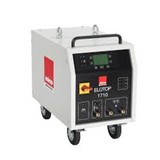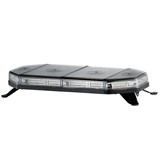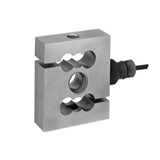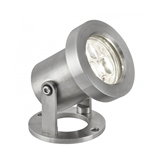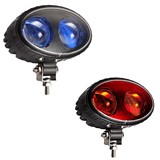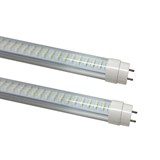According to Dr Tony Filmer, director of the Light Metals Flagship, Australia has the potential to be the world's Number 2 or even No. 1 producer if it successfully combines advanced technology, investment and knowhow with our vast natural resource base. "The key is to radically improve energy efficiency, whilst creating a much wider end use by significantly reducing production costs," he says.
Move over, coal and wine. Light metals are shaping as Australia's star industry turn by the mid-2010s - and our next $10 billion export earner.
Global demand for ultra-light, ultra-strong, recyclable metals is burgeoning as the world switches to low-emission vehicles, energy-saving devices and sustainable products. Aluminium demand is forecast to climb by 30 per cent, magnesium demand by 200 per cent, while for the emerging industrial light metal, titanium, the sky's the limit.
Australia is well-found in all three, with a mature $9bn aluminium industry already among our top exporters, a highly-prospective magnesium industry - despite the difficulties of AMC - and one of the world's richest titanium resources to build a new industry upon. Given such an endowment, the Federal Government, in its Light Metals Action Agenda, sees little reason why Australia should not become a world leader in light metals.
The essential ingredient, according to Comalco's former Managing Director of Smelting, Dr Tony Filmer who now heads up the most ambitious research program in the industry's history, is technology. This was a prime factor underlying the competitive success of both coal and wine, regarded by many - for different reasons - as the stellar performers of the past decade.
"I hold the belief that if Australia can mobilise its technological capability and direct it to the most critical opportunities, we can greatly enhance our light metals industry. However, if we don't, we will gradually slip backwards in the world," says Dr Filmer, who directs the new Leading The Light Metals Age National Research Flagship.
"The key is to radically improve energy efficiency, whilst creating a much wider end use by significantly reducing production costs."
Australia currently lies fourth or fifth in the world light metals rankings - behind China, the USA, Russia and - possibly - Canada.
"I'm absolutely confident we have the capacity to be No 2, or even No 1. We have a great raw material base, and in operational know-how we're second to none. It's a matter of finding the right technologies and the right investment opportunities," he says.
A critical factor, which has more in common with wine than coal, is the further development of an integrated value chain, extending from mine to finished product, with technology enhancing every link. The Light Metals Flagship is set up to do just that.
The specific goals of the Light Metals Flagship are to help:
1. double the economic value of Australian light metal production to $10 billion by 2010
2.cut by a third the energy needed to make light metals
3. develop novel manufacturing systems for light metals and alloy products
4. develop technology to create a new titanium metal industry
cut the life-cycle environmental impact of light metal products by half.
"In light metals, we have an opportunity to create a truly 21st century industry - one that is efficient, competitive, clean and green and which manages the total life-cycle of its products," he says.
"We recognise there's a long distance to travel between a gleam in the eye and a full-scale industrial operation, earning a billion dollars. But if you don't start out on the pathway, you've little hope of arriving."
With this precept in mind, the LM Flagship has adopted a strategy of spreading its research risks. Individual programs range from incremental improvement to the efficiency and sustainability of existing technologies, to inventing totally new ways to process metal.
"This way we can ultimately be sure of delivering value for the industry and for Australia," he says.
The emphasis on making light metals cleaner and greener is strong. According to Alcoa World managing director Wayne Osborn, two thirds of the aluminium produced worldwide since 1888 is still in use - an astonishing fact of industrial history. With more advanced processes, Dr Filmer considers it possible that most of the aluminium, magnesium or titanium produced today will still be in use centuries from now.
"Light metals require a lot of energy to produce but because we can recycle them to readily, they are far more energy-efficient than other materials over their total life-cycle. We aim to improve on that." he says.
A further dimension is the opportunity to integrate from one industry to another, using the byproducts of light metals production as the feed for other kinds of products, he says.
The Light Metals Research Flagship is, above all things, a partnership - involving companies large, medium and small, governments and research organisations like CSIRO and the CRCs. Recognising Australian enterprises usually lack the scale to compete against the global giants, the industry has borrowed a sporting analogy to create a "team Australia" approach to secure a world technological lead - and capture it to the benefit of local industry and the nation.
Harvard economist Professor Michael Porter identifies the effective industry cluster as one of the keys to success in the C21st trading environment, using Australia's wine industry as case in point. With the experiences of aluminium to guide it, the lesson has also been absorbed by the light metals sector.
"There are about 1400 Australian companies involved in early-stage or elaborate transformation of light metal minerals and products," Dr Filmer says. "One of our particular aims is to use the Flagship to catalyse a specialist export cluster in light metals processing, products, technology and related services."
The LM Flagship has five major research themes covering the whole value chain:
1. Building on Australia's bauxite resources
2. Improving the energy efficiency and environmental sustainability of aluminium production
3. Growing the magnesium industry through enhanced cost effectiveness
4. Superior cost efficiency and performance in light metals fabrication
5. Creating a new, world-scale titanium industry.
In the case of bauxite and alumina, the goal is to improve the Bayer process precipitation time by 20 per cent, to curb environmental emissions and to cut energy use in calcination plants by about a third.
For aluminium, the research aims to improve the energy efficiency of the Hall Heroult process by 10 per cent through better process automation and control, to explore and develop an alternative way to produce aluminium and to reduce the industry's environmental footprint through better use or re-use of byproducts.
The magnesium theme contains plans to enhance the Australian Magnesium Process and to create new carbothermic and electrowinning production systems that reduce costs by up to 30 per cent.
In fabrication the research goals are to eliminate steps in the fabrication process as a way of reducing costs, to design new alloys and treatments that allow weight-saving in metal products, and to create an Australian centre of excellence for the design of magnesium products for the aerospace, automotive and electronics industries.
For titanium, the aim is to characterise ilmenite ores for upgrading and production efficiency, to develop a new, low-cost way to make titanium metal that will halve present costs and to develop new titanium products through novel roll-casting, welding, surfacing and shape-forming techniques.
The goals are unashamedly ambitious, but Tony Filmer is quietly confident they are all achievable if Australian industry and science pool their brains and resources - and move the technology to the value-add stage as quickly as possible.
"Australian scientists have a world-class capability in aluminium, magnesium and titanium research," he says. "New technologies such as carbothermic smelting and near nett shape forming are emerging as proof we can meet the challenge.
"By bringing together a number of disciplines and institutions in which we have leading strengths, Australian business can develop a global competitive edge in this important field, underpinning new exports of metal, manufactured products, technology and services."
One of the most promising aspects of the Light Metals industry is its potential to benefit regional Australia - from the bauxite mines of the north and west, the aluminium production centres of the south, the magnesium industry of central Queensland and the rich ilmenite (titanium) deposits scattered across the Murray-Darling Basin.
Currently the industry comprises 1400 firms and more than 22,000 employees, to which aluminium contributes the lion's share. Future development based on technological advances increases the scope for new enterprises and jobs - many of them regionally-based.
Another dimension is the ability of research to significantly enlarge Australia's resource base in light metal ores, by enabling us to process lower grade materials.
For industry, light metals offer significant environmental advantages. They are revolutionising the transport sector by reducing the weight and fuel consumption of cars, trucks, locomotives, ships and aircraft worldwide. Second, they offer scope to reduce energy use over the lifetime of a metal, which may be economically recycled and re-used many times with low incremental energy inputs. Thirdly, the corrosion-resistance of light metals offer both increased effectiveness and extended life for complex components, and helps to reduce industry's total materials usage.
The Light Metals Flagship also illustrates an important new principle in how Australians develop and make use of technology - national partnership, involving research organisations, mining, mineral and manufacturing companies and governments.
"Its a great example of how Australians are going to do things in future as we seek to develop world-scale industries, " Dr Filmer says.
"Light metals have, in one sense, been the quiet achievers of the resources sector, generating an awful lot of export dollars without having a very high public profile. The partnering model is another way they will add value to Australia.
"Today there are at least five giant companies who spend more on R&D that the whole of Australia put together. There's no doubt that technology will help decide the winners and losers of tomorrow. If we are to withstand competitive pressure like that, we need to work as a team.
"Fortunately, Australians are pretty good at that - and the light metals sector is again showing the way."


